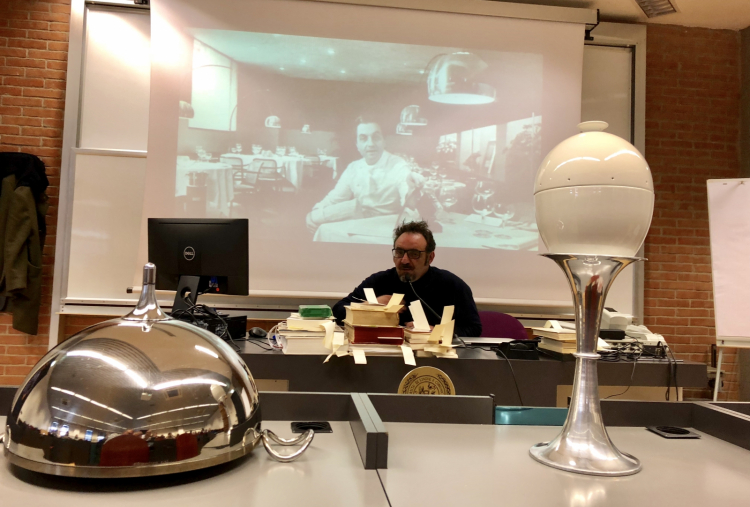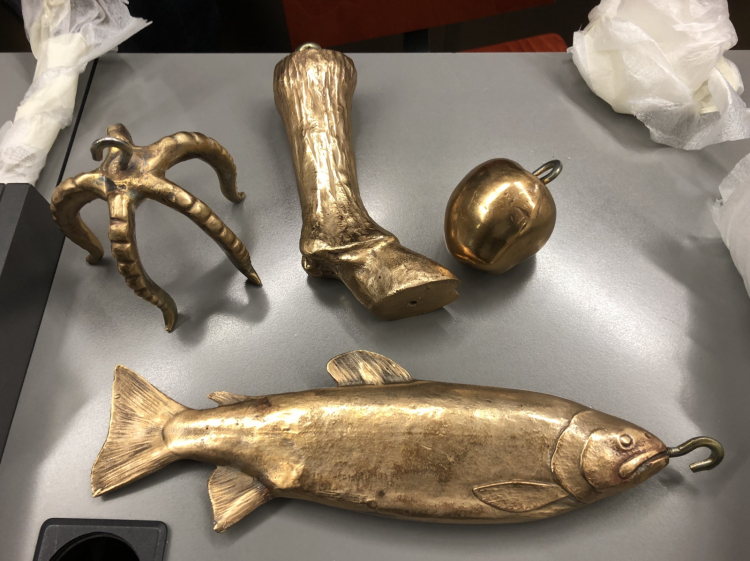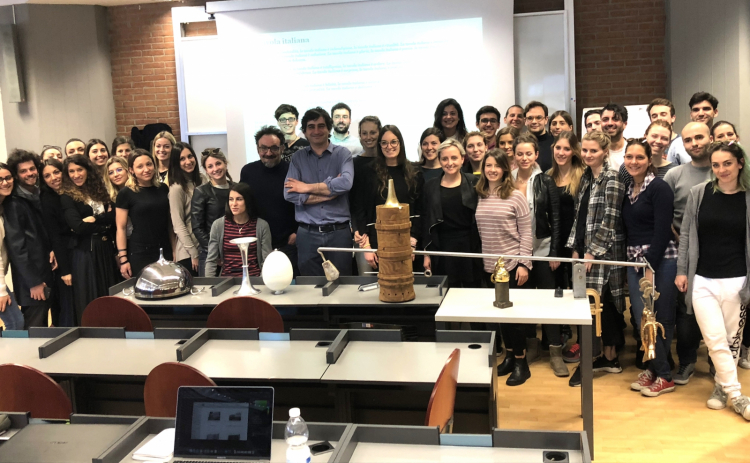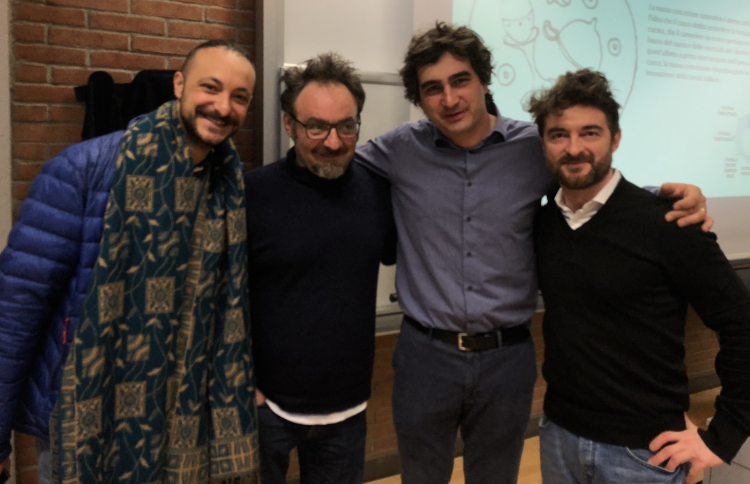Last Thursday, Iulm in Milan hosted a lesson featuring two prominent speakers: Paolo Lopriore, chef at Il Portico in Appiano Gentile (Como) and Luca Govoni, who teaches Food and gastronomic history at Alma, the prestigious cooking school in Colorno (Parma). We first enthusiastically listened to both of them at Identità Golose 2017.
A chef teaching at university? Something forbidden for centuries, a consequence of a millennial western prejudice according to which gastronomy doesn’t have the dignity of science. Yet times change, academic censorship is muffled and universities are offering more and more space to kitchen professionals who can offer classes a testimony of the infinite implications of eating in daily life.
Lopriore and Govoni’s audience was formed by 60 participants in two post-graduate master degrees – “Food and Wine communication” in collaboration between Iulm and Gambero Rosso and “Made in Italy”. Throughout the day they listened carefully to the historic and anthropological implications of Italian food, to the authorities and philosophies that have contributed in defining the current style of dining and the perspectives of a “new approach to catering”, a theme that was first analysed with much acclaim a few weeks ago, on the stage of Identità 2018.
The focus at Iulm started with a sparkling video showing orchestra director Riccardo Muti in «In difesa dell’opera italiana», which Govoni and Lopriore translated into a gastronomic motto because the language of contemporary cuisine, still in its embryo phase, can and must draw from all the other industries that have enjoyed a relevant debate.

Lopriore between books and utensils in his trattoria. Behind him, his master Gualtiero Marchesi

The counterbalance of Lopriore’s new spit, the emblems of Italian cuisine
So all those visionary people who contributed in defining today’s cooking join «In defence of Italian cuisine».
Bartolomeo Scappi(1500-1577), «
Ferran Adrià’s proto-cook, the man who dared making salads with raw vegetables, a taboo still partly valid these days».
François Pierre De la Varenne (1618-1678), «the man who among other things placed desserts at the end of the meal».
Georges Auguste Escoffier(1846-1935), the father of 20th Century fine dining, an associate of
Cesar Ritz and «the man who wrote the essential ‘The origins of menus’, through which he taught the importance of alternating ingredients»
And before them, there were gastronomist
Maestro Martino da Como, «a cook who urged not to copy but to create personal recipes, in the 15th century»; the famous
anonymous recipe books as well as
Kitab al-Tabik, «the Arab author of a recipe book that in the 13th century already included recipes such as our parmigiana di melanzane, arancini/arancine, pane ca’ meusa and vertical salads», the vegetal ancestors of the
pièce montée that were to become popular in French pastry making.
«In order to understand the present, we need to know where we come from», chef and historian repeated like a mantra, «Only by doing so we can really understand tradition with a capital T and try to go beyond it, becoming interpreters instead of executors». Gualtiero Marchesi, Lopriore’s master, immediately comes to mind. The latter was a favourite pupil of the man who readapted French tradition following his personal and Italian artistic sensitivity. «Years ago», says Govoni, «I asked the maestro why his tasting menu was made of 7 courses. ‘Because 7 is 14 divided by two’, was his cryptic reply. Only years later I realised that Escoffier’s tasting menu, the classic 20th century menu, included 14 courses».
Marchesi drew from the past and recreated it in his own way, through what later became the “regole marchesiane” [Marchesi’s rules], «which required chefs to alternate ingredients, cooking procedures, textures, shapes and colours». «As Italians», adds Lopriore, «we should thank him for his concept of total cuisine, which taught us to consider each single aspect of a restaurant, even the most irrelevant».

Lopriore and Govoni with the students at Iulm

Paolo Lopriore and Luca Govoni with cooks Diego Rossi and Federico Sisti, who attended the lesson
Yet the pupil insults his master, when he doesn’t try to improve what the latter taught him. Hence the extraordinary theoretical and practical framework created by
Lopriore who almost two years ago returned to his hometown, Appiano Gentile, to redefine the destiny of Italian trattoria. A work on behavioural and convivial eating, on restaurant triangles, on circadian tables, steamers and swinging spits, studies on bread and what is served with it, a list of items which we have already largely covered.
The lesson at Iulm ended with an enlightening quote (which you can read in its integrity in the March issue of cooking magazine Cook_Inc), of which follows an extract:
«Italian dining is about conviviality, preparing a feast, rituals, emotions, memories, seduction, glory, poetry, history. My grandmother used to whisper to me gently.
Italian dining is about complicity, surprise, identity, candour, freshness, warmth, sweetness, palpitation, light heartedness. Thinks Paolo Lopriore.
Lets get hold of Italian dining once again. Hopes my daughter».
Translated into English by Slawka G. Scarso